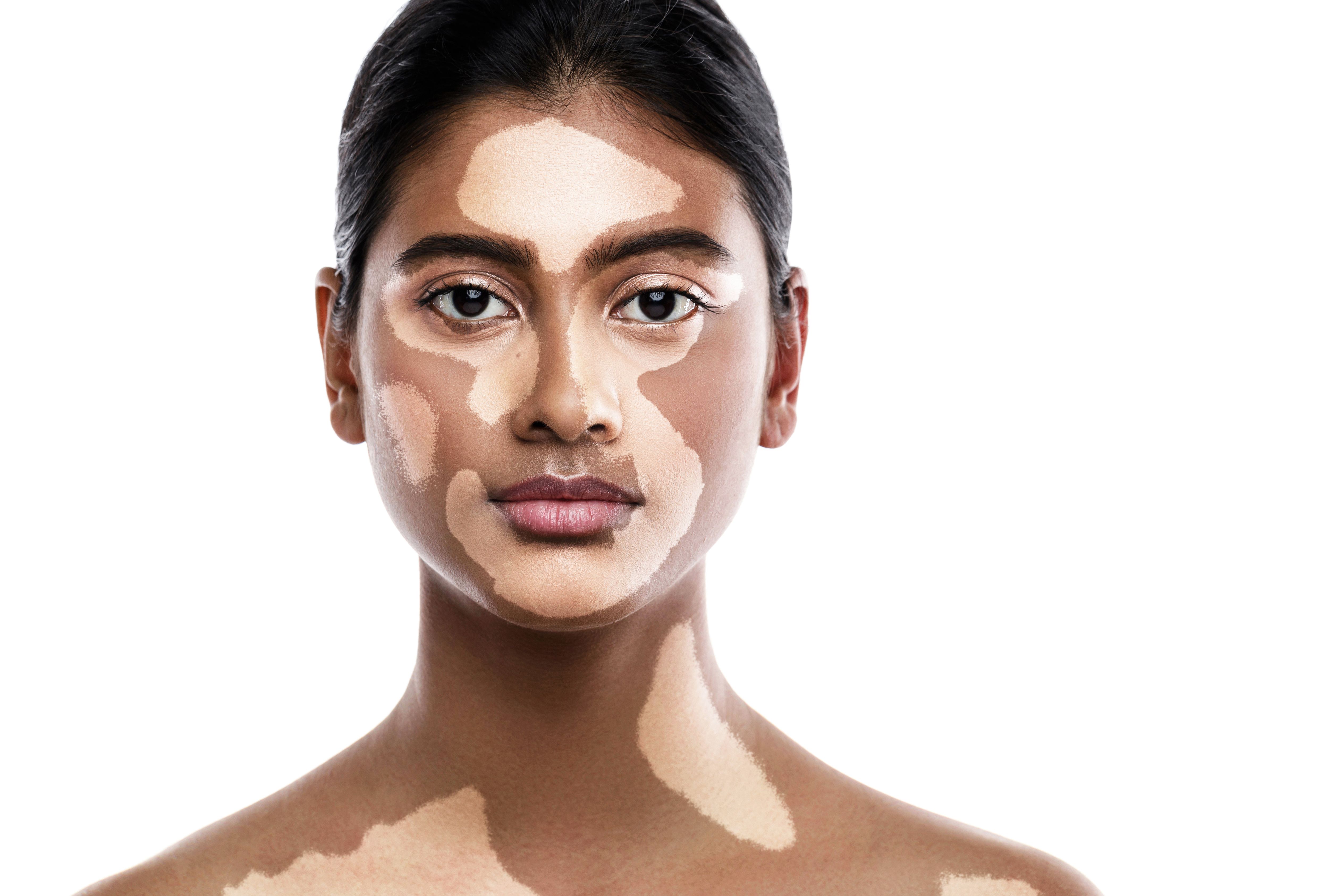- Acne
- Actinic Keratosis
- Aesthetics
- Alopecia
- Atopic Dermatitis
- Buy-and-Bill
- COVID-19
- Case-Based Roundtable
- Chronic Hand Eczema
- Drug Watch
- Eczema
- General Dermatology
- Hidradenitis Suppurativa
- Melasma
- NP and PA
- Pediatric Dermatology
- Pigmentary Disorders
- Practice Management
- Precision Medicine and Biologics
- Prurigo Nodularis
- Psoriasis
- Psoriatic Arthritis
- Rare Disease
- Rosacea
- Skin Cancer
- Vitiligo
- Wound Care
Article
25.1% of Patients Cited “Less Noticeable” Vitiligo in Recent Study
Author(s):
By week 24 of the phase 3 study, a quarter of participants felt their vitiligo had improved.
More than a quarter of study participants felt their vitiligo had become less noticeable after using ruxolitinib cream, according to a poster presentation from the American Academy of Dermatology (AAD) Annual Meeting.1
blackday/AdobeStock

In February, Incyte announced a positive opinion for ruxolitinib cream in the treatment of non-segmental vitiligo following the conclusion of its TRuE-V studies in 2022. The 2 phase 3 studies, both randomized, double-blind, and vehicle-controlled, sought to determine the efficacy of the cream version of ruxolitinib, a JAK1/JAK2 inhibitor, in patients ages 12 and older with vitiligo.
In these studies, researchers evaluated improvements, stability, and increases in vitiligo noticeability using the Vitiligo Noticeability Scale (VNS) following 52 weeks of treatment.
Patients ages 12 and older with a non-segmental vitiligo diagnosis and depigmentation covering 10% or less of their body’s surface area were considered for participation in an up to 32-day screening period.
Participants were then assigned to either the 1.5% ruxolitinib cream or the vehicle control and applied their assigned treatment on a once-daily basis for 24 weeks. Researchers collected efficacy data and conducted analyses at weeks 12, 24, and 52, including a safety analysis.
At week 12, 402 of the patients applying ruxolitinib cream (n=450) were evaluated using the VNS. Of these, 16.7% had a VNS score of 4, or 5, indicating their vitiligo was a lot less noticeable or no longer noticeable when compared to their baseline score.
At the second VNS evaluation at week 24, 25.1% considered their vitiligo to be less noticeable—a nearly 10% improvement from the previous evaluation. Additionally, 55% felt their vitiligo had the same or equal noticeability, and 16.2% felt their vitiligo had increased in noticeability. Despite the amount of participants who described an increased in vitiligo noticeability, this number was a decreased response.
Also at week 24, 22.4% of participants assigned the ruxolitinib cream treatment had a VNS score of 4 or 5.
By week 52, 28.4% of patients using ruxolitinib felt their vitiligo was less noticeable, 44.3% felt their vitiligo was of the same noticeability, and 12.7% described their vitiligo as having increased in noticeability. These statistics show improved, stable, and decreased responses from the previous assessment at week 24, respectively.
By the study’s conclusion at week 52, 124 of 402 participants, or 30.8%, described their vitiligo as a lot less noticeable or no longer noticeable.
No serious adverse events (AE) related to treatment were reported throughout the study’s duration. The most common AE related to treatment were application site reactions, including acne (5.6%) and pruritis (4.7%), none of which were severe in nature. The most common AE included application site acne or pruritis, COVID-19, and nasopharyngitis. Researchers also noted that none of the participants experienced clinically significant changes to their hemoglobin or platelet levels.
"Adolescents and adults with nonsegmental vitiligo applying ruxolitinib cream largely thought that compared with baseline, their vitiligo was less noticeable or of similar noticeability from Week 12 to 24 and from Week 24 to Week 52 per pooled data,” the study said. “Ruxolitinib was well tolerated, with no serious treatment related AEs reported through 52 weeks.”
Reference
- Ezzedine K, Passeron T, Rosmarin D, et al. Vitiligo noticeability scale score maintenance or shirt during 52 weeks of ruxolitinib cream treatment for vitiligo: Pooled analysis of the TRuE-V phase 3 studies. Presented at the 2023 American Academy of Dermatology Annual Meeting; March 17-21, 2023; New Orleans, LA. Accessed March 17, 2023. https://aad-eposters.s3.amazonaws.com/AM2023/poster/43959/Vitiligo+Noticeability+Scale+Score+Maintenance+or+Shift+During+52+Weeks+of+Ruxolitinib+Cream+Treatment+for+Vitiligo+Pooled+Analysis+of+the+TRuE-V+Phase+3+Studies.pdf
















